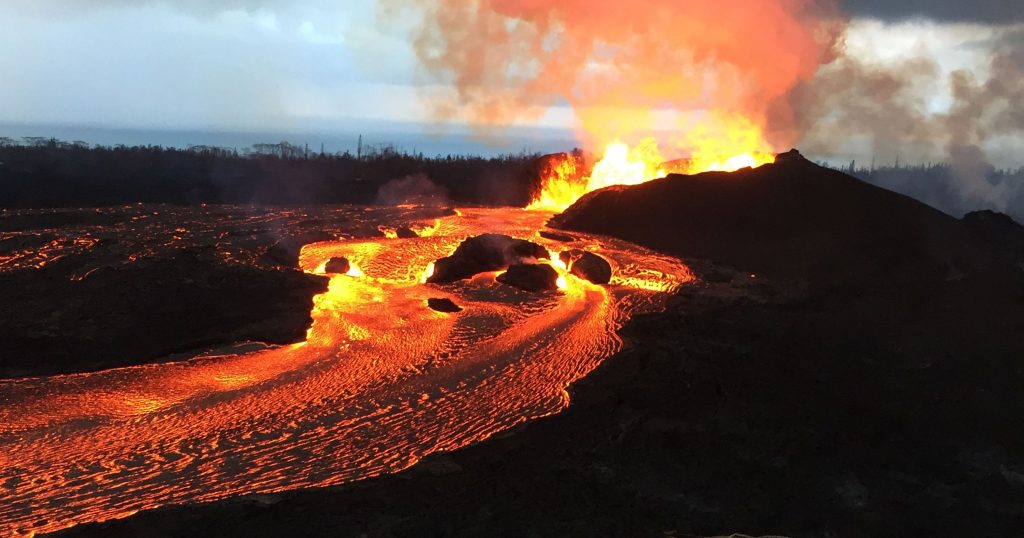Hawaii’s Kilauea volcano was one of the biggest and most compelling stories of the summer as the volcano spewed lava flows paved over miles, devoured an entire bay and redesigned the coastline of the Big Island. Now, months since the last time the volcano produced a lava flow, scientists are calling Kilauea’s lower East Rift Zone eruption and caldera collapse the largest in at least 200 years, according to a new study in the journal Science.

Kilauea’s Pu’u ‘Ō’ō vent collapsed at the end of April and just days later on May 3, the first of two dozen lava-gushing fissures ripped open.
The collapse of Kilauea’s caldera, effectively a massive pot of magma, was significant because the previous 100 years of observation saw the caldera drop a few inches to feet at a time. Between May and August, Kilauea’s caldera dropped about 1,640 feet — more than the height of the Willis Tower in Chicago — over 62 incidents.
“Each of those 62 almost-daily events was still larger than any of the other subsidence events we’ve measured with modern geophysical instruments,” Montgomery Brown of the U.S. Geological Survey told Popular Mechanics.
Over the course of four months, Kilauea spouted out at least .2 cubic miles of lava across a 13.7 square mile area, enough lava to fill 300,000 Olympic swimming pools.
Although Kilauea’s 35-year eruption period seemingly came to an end when it went into a pause in September, researchers know the volcano isn’t going to be silent forever. In a 2018 update to the USGS National Volcanic Threat Assessment, Kilauea was ranked the most threatening on the list of U.S. volcanoes above Mount St. Helens and Mount Rainier.
“We’re in this lull,” Christina Neal, head scientist at the USGS Hawaiian Volcano Observatory, told Science News, “we just don’t know what is going to happen next.“











